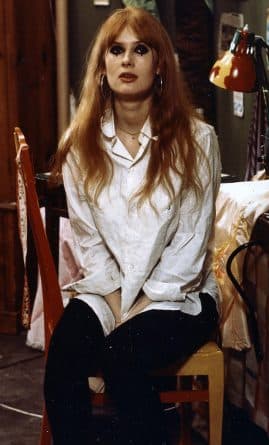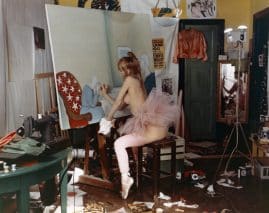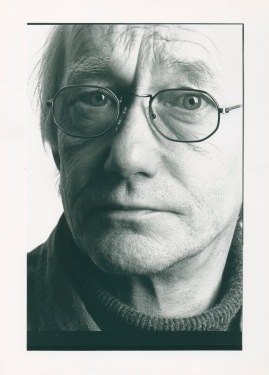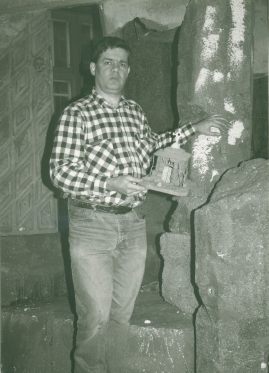Marie-Louise Ekman
Table of contents
- Basic facts
- Links and resources
- Biography
- Awards
- Films
- Original work
- Soundtrack listing
- Groups
Basic facts
Media (2)
| Alternative names |
|
|---|---|
| Director |
|
| Screenplay |
|
| Show all films | |
| Awards |
|
Biography
Swedish director, actress, artist, art professor, art school principal and theatrical director. Born as Marie-Louise Ester Maude Fuchs in Stockholm. Married to artist and filmmaker Carl Johan De Geer 1966-1971, the director Johan Bergenstråhle 1971-1980 and the actor Gösta Ekman 1989-present.-Talent surely lies in her genes, yet relationships and her surroundings have always been of importance for Marie-Louise Ekman. For many years she kept both the names of her ex-husbands (De Geer Bergenstråhle), but since she married the actor Gösta Ekman in 1989 she has...
Links and resources
Biography
Swedish director, actress, artist, art professor, art school principal and theatrical director. Born as Marie-Louise Ester Maude Fuchs in Stockholm. Married to artist and filmmaker Carl Johan De Geer 1966-1971, the director Johan Bergenstråhle 1971-1980 and the actor Gösta Ekman 1989-present.
-
Talent surely lies in her genes, yet relationships and her surroundings have always been of importance for Marie-Louise Ekman. For many years she kept both the names of her ex-husbands (De Geer Bergenstråhle), but since she married the actor Gösta Ekman in 1989 she has been known simply as Ekman.
Her father, Walter Fuchs, was a well known PR man and party arranger. Ekman often harks back to him and her sometimes painful childhood memories in her films, which are both affectionate and troubled at the same time: Hallo Baby (Johan Bergenstråhle, 1976), Mamma pappa barn ('Mummy Daddy Children,' 1977), For Adults Only (Barnförbjudet, 1979) and Dad is Tired Again (Nu är pappa trött igen, 1987). Her talent for drawing became apparent at an early age, and she developed it steadily; first in the commercial world of advertising and later in the satirical left-wing circles in which she moved. Her marriage to Carl Johan De Geer in 1966 undoubtedly inspired her often naivistic art, playfully provocative and stylistically informed by comic books, and it is no coincidence that it was De Geer who stood for the highly imaginative set designs of her early films.
Her marriage to the director Johan Bergenstråhle and the two children they had together caused her to mature both personally and artistically. She gained greater independence, discovering that not only could she paint, but she could also write and create her own world. It began with the film Hallo Baby, which her husband directed but for which she wrote the screenplay and played the lead. The film uses stylised tableaus to reflect bizarre milieus and her exhibitionistic life. The choice of actors for the film became an important factor when she began to write and direct her own films for television and the cinema.
Ekman always writes her screenplays with certain actors in mind, tending to choose those who are somewhat distinctive and theatrically expressive, at times almost to the point of overacting: Toivo Pawlo, Ernst-Hugo Järegård, Örjan Ramberg, Rolf Skoglund and others. It is the acting and set designs that lifts her films, whereas the cinematography is often static. A moving camera is seldom used. The subject itself is what is important. One of her most striking films is the aptly named Still Life (Stilleben, 1985).
Marie-Louise Ekman is entirely self-taught both as an artist and director, but that has in no way hindered her from making a career as Professor of Painting at the Royal Swedish Institute of Art 1984-1991, Principal of the Institute 1999-2008 and head of the Royal Dramatic Theatre 2009-2015. It was there that she completed what is perhaps her best and most striking film project, Den dramatiska asylen ('The Dramatic Asylum,' 2013). This imaginative look at life behind the scenes at the Royal Dramatic Theatre comprises 50 short films of around five minutes each featuring actors from the theatre itself. Ekman was responsible not only for the screenplays, direction and editing but also for the cinematography. However, to play the part of the head of the theatre she chose three different actresses each wearing colourful glasses and made up to look like herself.
Marie-Louise Ekman's enthusiasm for experimentation has never flagged, neither has her desire to challenge artistic ideals, moral attitudes and gender prejudice. Audiences may have regarded her films as elitist, but the critics have often been pleasantly surprised. Insightful critical comments include: "Unlike anything else," "Chaotically bewildering yet utterly true," "Wildly unconventional," "Cheekily mischievous," "Supremely egocentric," "Originality for its own sake - why not?" "A provocative Phoenix from the home of Pippi Longstocking".
In 1991 she won a Swedish Guldbagge award for her creative contribution to film.
Bengt Forslund (2015)
(translated by Derek Jones)
Awards
| The Guldbagge Award | Stockholm | 1991 | Creative Achievement |
|---|
Films
| Director |
|
|---|---|
| Screenplay |
|
| Film Editor | |
| Cast |
|
| Participant | |
| Other Crew |
|
Original work
| Cartoonist |
|
|---|




